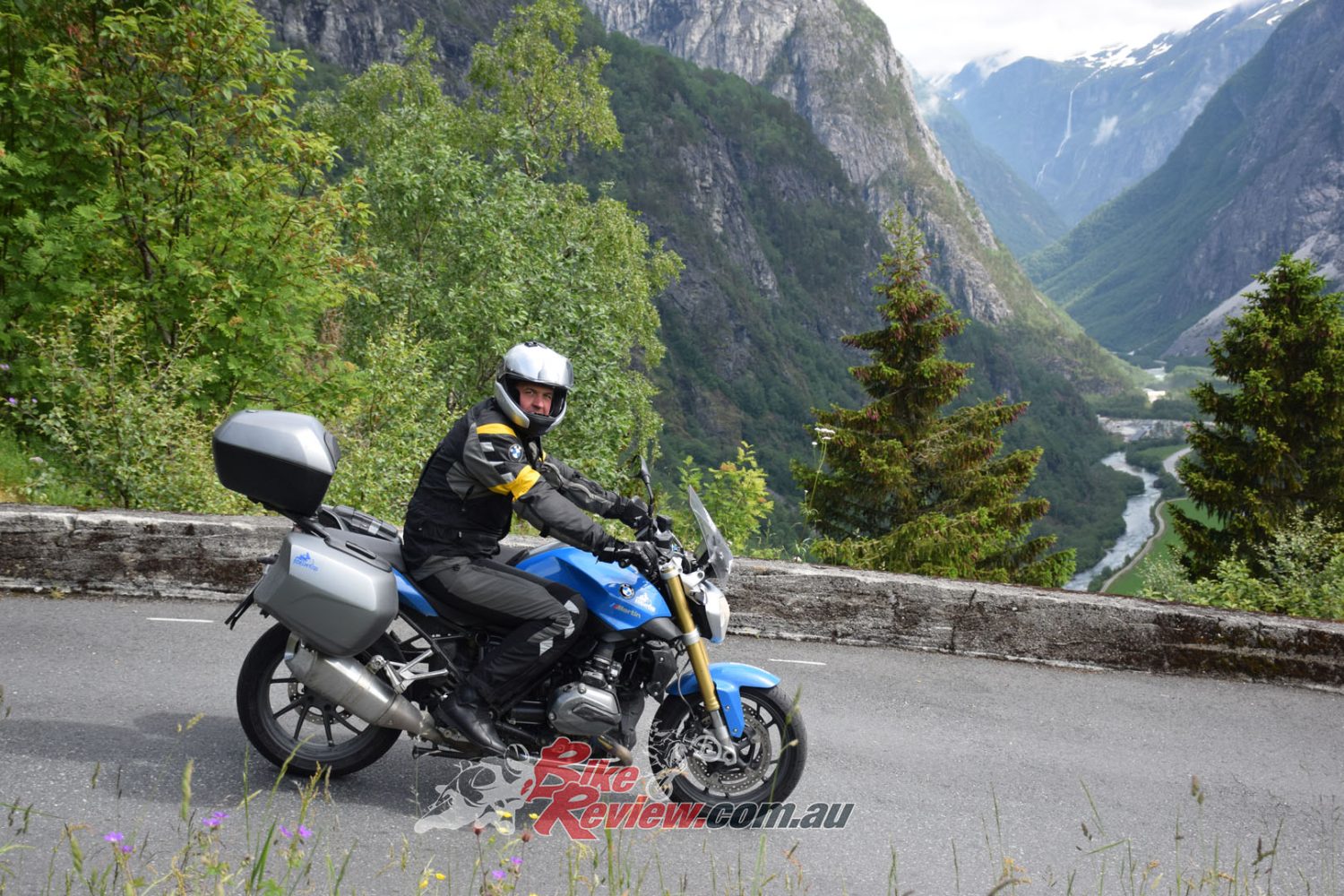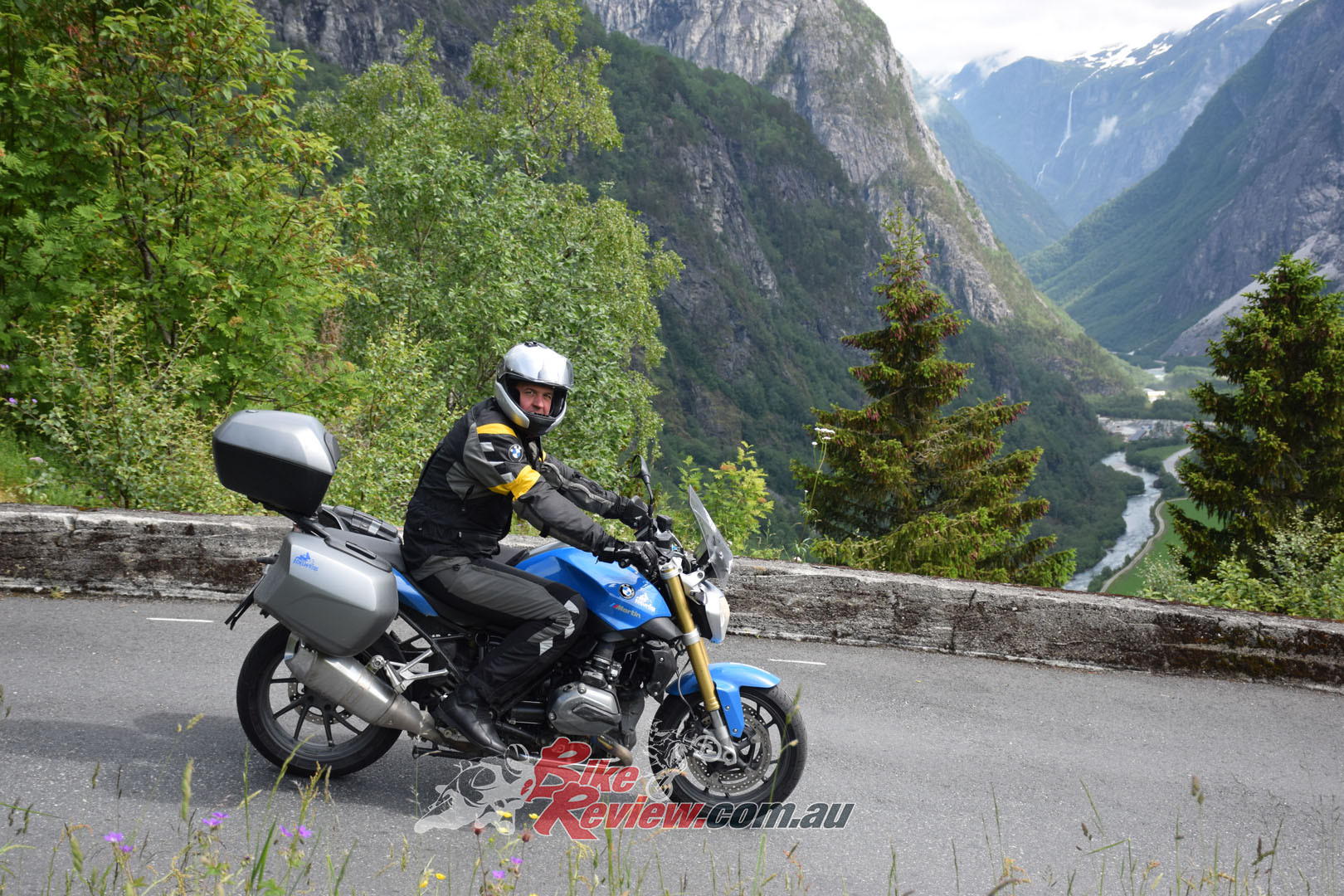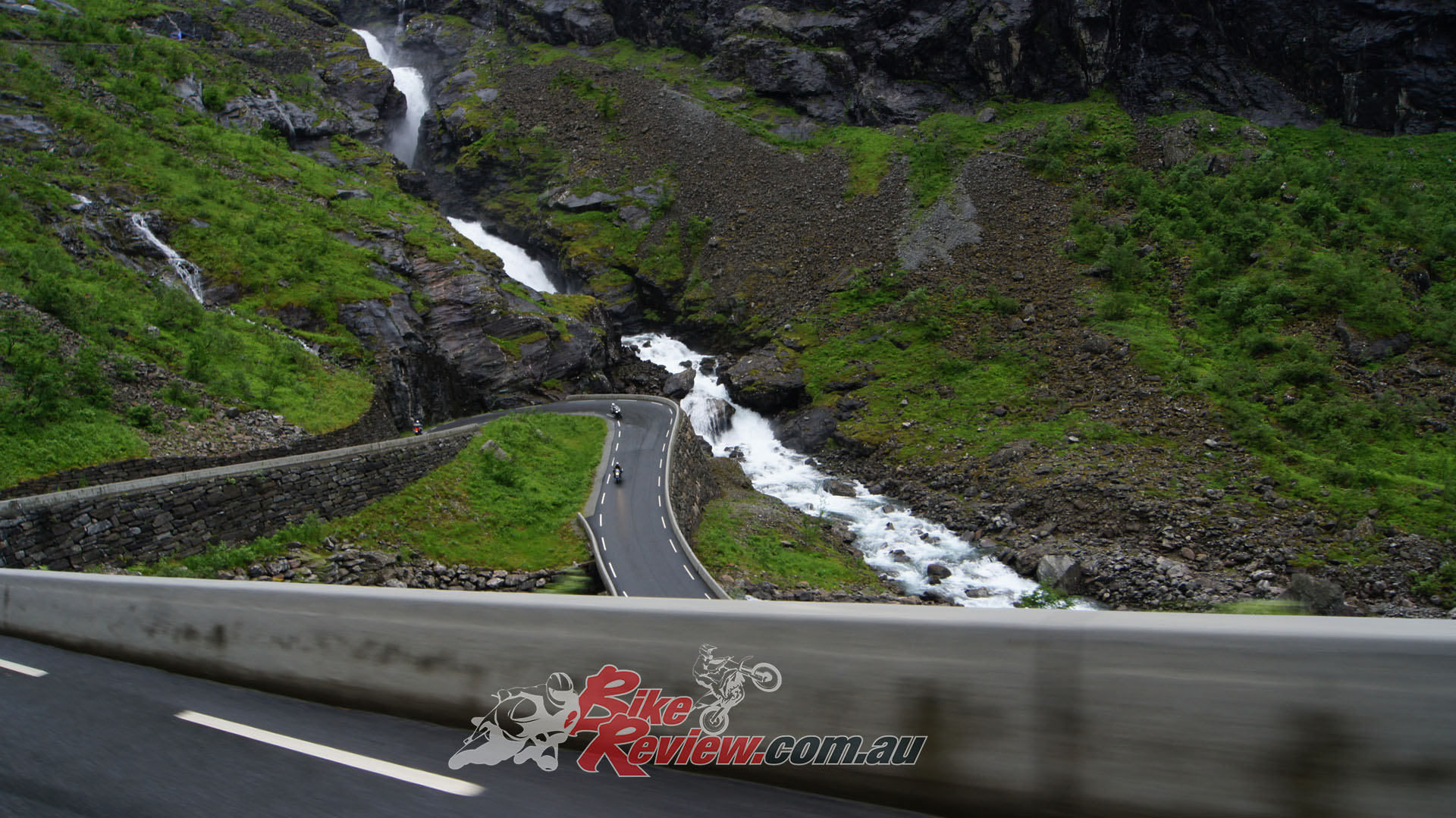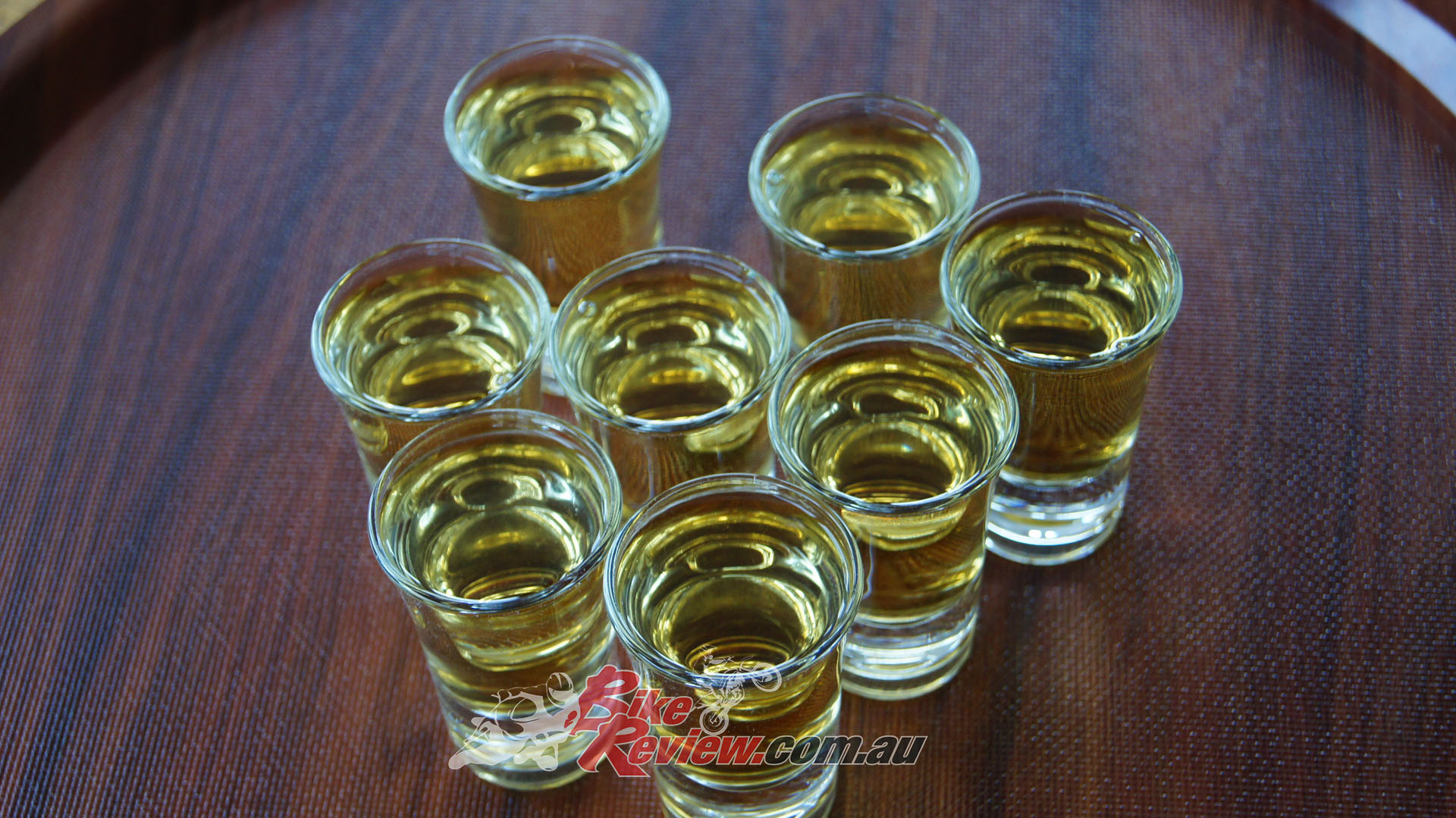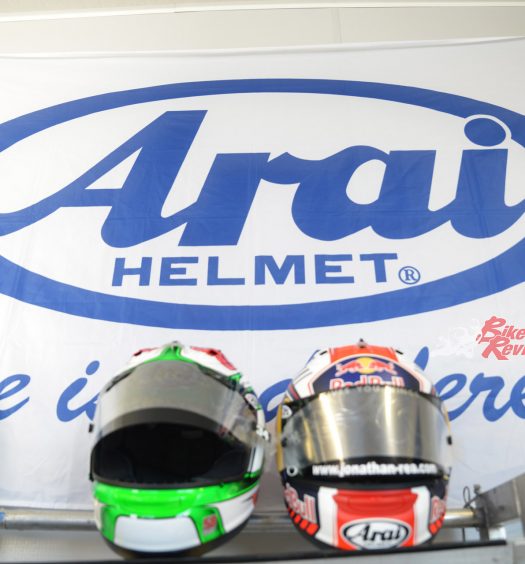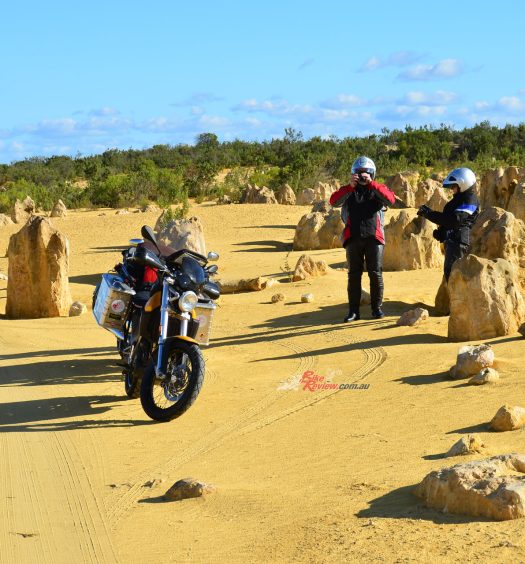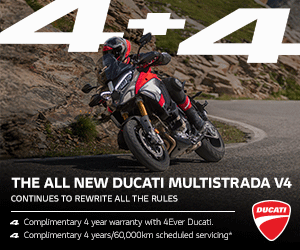Norway may seem like a boring country to many, but for motorcyclists, it's heaven on earth. The Bear headed to the Viking nation to check it out... Words & photos: The Bear.
A lot has been written about Norway, but I’m not sure that anyone has ever picked up the contradictions its society throws up. A regular Norwegian saying is, “Either conform to the customs or flee the country.” But, how is it to explore on a bike?
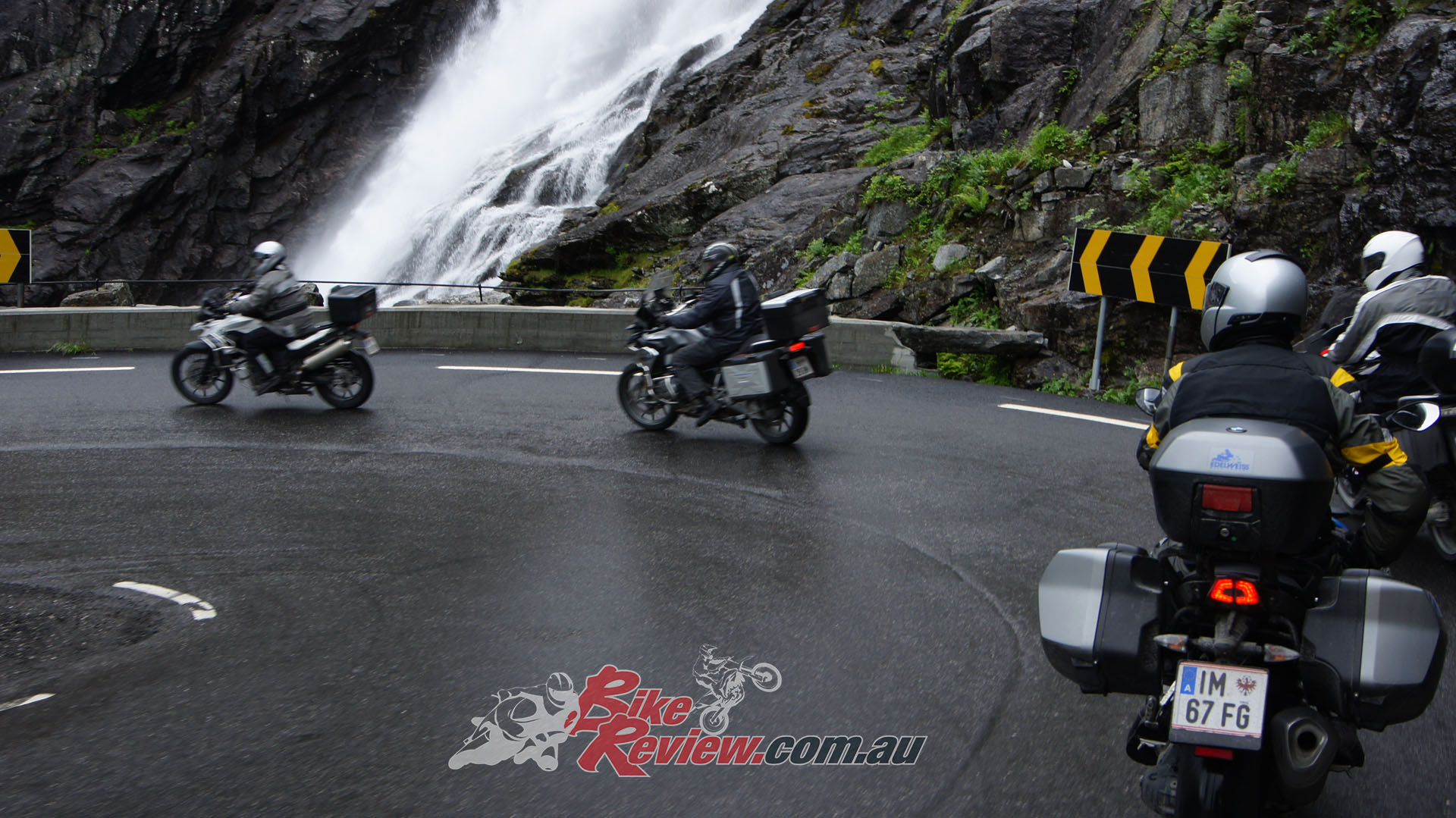
Fjords are the first thing you think of in Norway. The spectacular waterfalls should not be far behind.
I was talking to one of Odin’s Warriors, a Norwegian patch club whose members look just the way you would expect the descendants of Vikings to look, except I suspect they don’t perhaps wash as often as the original Vikings who were renowned for their personal hygiene. When I told him that saying, he clapped me on the back – I still have a couple of displaced vertebrae – and laughed.
“Right now I would rank Norway as the largest country in the world, I have never seen anything like it.” – Barak Obama.
“You want a Norwegian saying?” he bellowed. “Our clubhouse motto is ‘You can’t regret what you don’t remember’.” The Norwegian government tries to discourage heavy drinking, and as a result alcohol is expensive and the Warriors do regular duty-free booze runs on the international ferries.
I suspect that Barak Obama did not encounter any of Odin’s Warriors, and he was talking about the way the country turns vertical very quickly and very often. It is the only place I have ever travelled which was more vertical than New Zealand, though not perhaps quite up to Switzerland. This makes Norway a natural for motorcycle travel, of course, but there is another aspect that helps this along. Mountain roads are all very well, but not if they are modern superslab highways. In Norway, you do get the superslab, but you also get amazing back roads. The reason for the difference is interesting.
From time immemorial, Norway was a poor country. It was boring, too, to the point where the Norwegian royal court moved to Sweden where things were fun. Discovery of North Sea oil changed that, and Norway became one of the world’s richest countries. One result was that the old roads which used to snake their way up and down the many cliffs to connect towns and villages were replaced by modern highways, bridges and tunnels. But here’s the wonderful part: the old roads stayed.
The result is a network of motorcycle roads that is probably unequalled anywhere in the world. They are not always in good condition; winter frost damage might take a while to be repaired, for instance. But if you make allowance for that you will find the most wonderful bike roads you could ever imagine. The outstanding example of a bike road is of course Trollstigen, the troll’s ladder which offers some challenging corners in its 800 metre vertical descent.
“In Norway there is a network of motorcycle roads that is probably unequalled anywhere in the world… The outstanding example of a bike road is of course Trollstigen.”
Norway is not short of other challenging pass roads, all of them part of the old, pre-prosperity network. But the new roads have a lot going for them, as well. Take the Lærdal tunnel. This is the world’s longest road tunnel at 24.5 kilometres, and just in case you get bored spending such a long time under the ground, it has three spectacular light shows along the way.
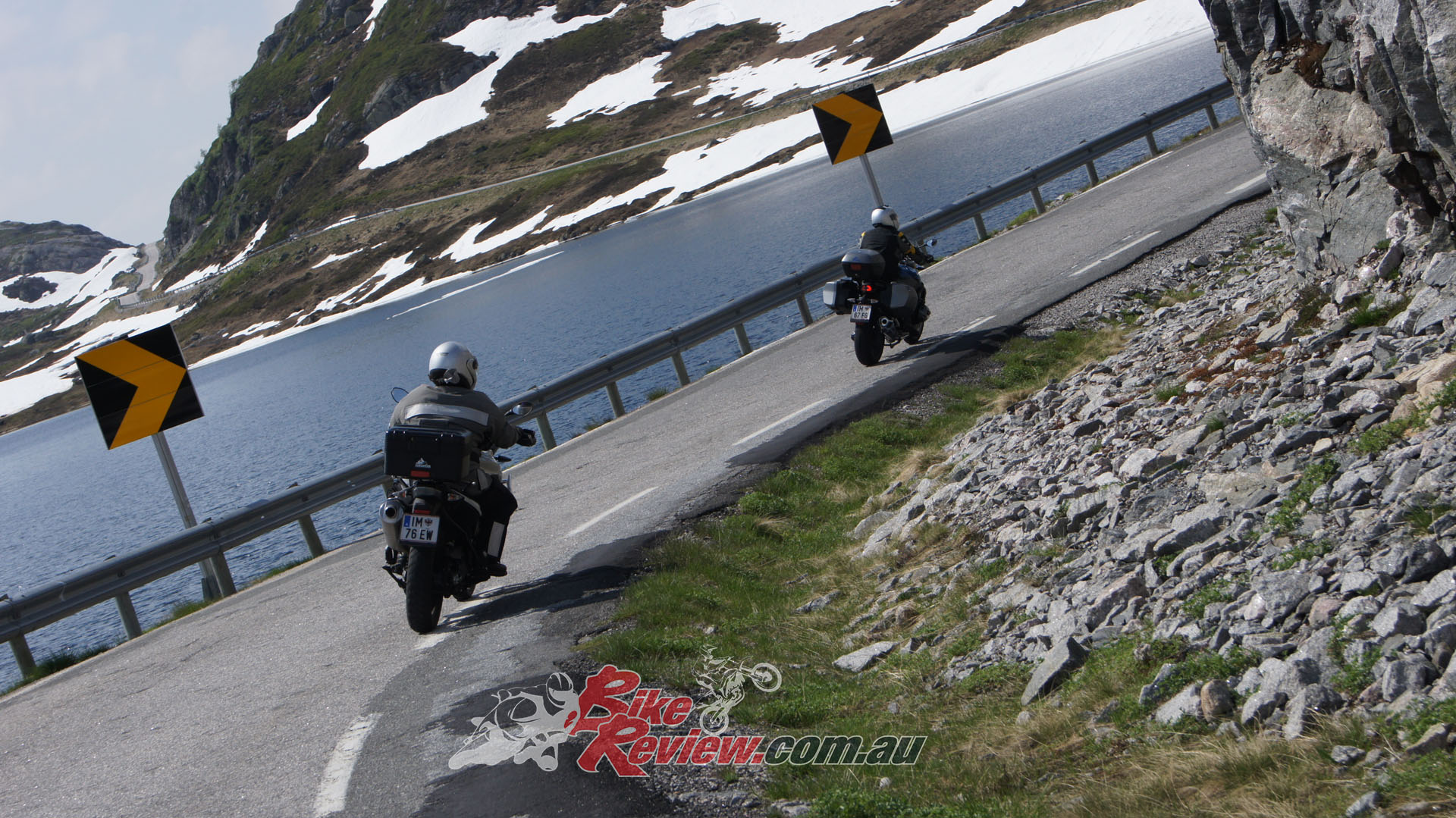
Altitude variation can mean you will ride through snow at one moment and through wildflowers the next.
In case you’re worried about my earlier comments about Odin’s Warriors, don’t be. They are about as friendly as any patch club I have ever encountered, and they also offered useful riding hints. “The police borrow camouflage clothing from the army, and they hide in the bushes with their speed radars,” one of them told me. I honestly can’t say I encountered that, but it was a neat thing to be warned about.
Follow The Bear’s tracks here for more travel ideas…
It might have taken me a long time to get around to this, but Norway is an outstandingly beautiful place; not just for the cliffs and fjords but also for the picturesque valleys and towns. Above Trollstigen there is a valley that produces staggering amounts of strawberries. Stop at one of the many cafés and you’ll find strawberry cream cakes that would turn an anorexic into a gourmand. I think I gained a couple of pounds at one stop.
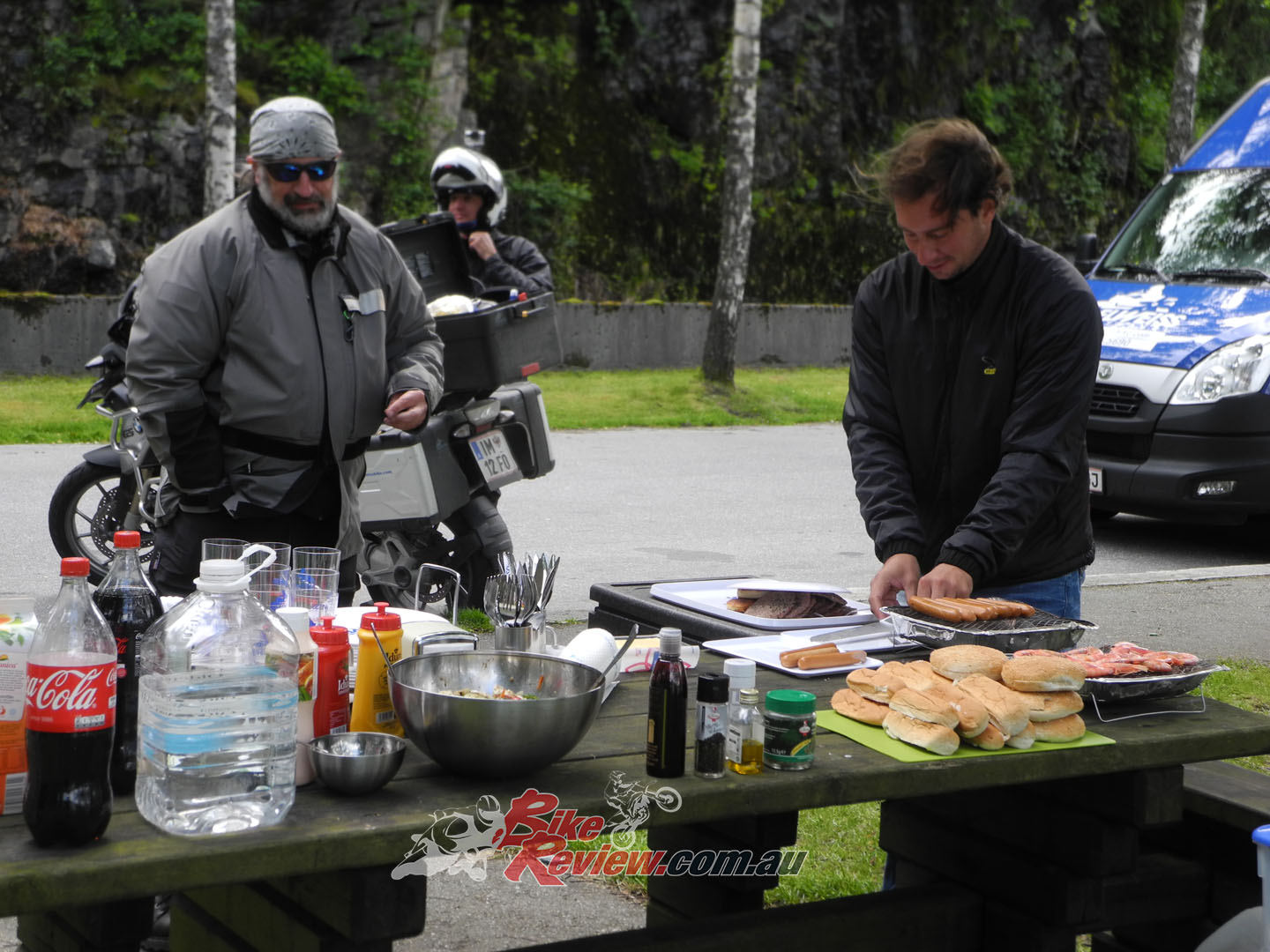
One of my Trips was with tour operator Edelweiss. This is a ‘picnic’ lunch they put on along the way.
Because so many of the old roads have been bypassed, they carry very little traffic which makes them prime motorcycling roads. Not only is the riding good, but the scenery – like the many truly amazing waterfalls – is just outstanding. Sometimes scenery and bike roads combine; one example is the Atlantic Road which is probably the most-used bit of tarmac for motorcar advertising in the world. Everyone from Porsche to Hyundai has filmed its cars on its curved bridge and wave-washed track.
“Because so many of the old roads have been bypassed, they carry very little traffic which makes them prime motorcycling roads.”
The towns are wonderful, too. In Bergen, apart from the wooden buildings of the ancient Hanseatic quarter, there’s a cog railway up to a lookout over the town. The carriages were ordered from Germany and the contract was written in German Reichsmark, but Germany was in the middle of hyper-inflation. Despite that, the carriages were delivered at the contract price – which was effectively nil. Then in WW2, the invading Germans set up anti-aircraft guns at the top of the cog railway and transported the equipment up there by the railway. The outraged description of this, to this day, is written on the wall of the station. It says, “and they didn’t even buy tickets!” Talk about ingrates.
I have done three trips to Norway, neither of which went a long way north. As one rider I met along the way told me, “It’s kind of special to make it to the Arctic Circle, but a lot of the riding is really, really boring…” Don’t let me discourage you, but I thought I owed it to you to pass that on. By far the most exciting part of the country is the fjords in the west, with their narrow waterways crossed by ferries and their cliffs pierced by tunnels.
The capital Oslo is quite a small city with pleasant parks and tree-lined avenues. It has a number of terrific museums; my favorite was the Viking Ship Museum, but this has been closed for redesign rebuilding and won’t re-open until 2025. There are other museums on Bygdoy Peninsula including the Norwegian Maritime Museum and the Norwegian Museum of Cultural History, both worth checking out. If you have some spare time in Oslo, just go for a walk around town and stop for a drink or a meal at one of the many open-air cafés. This is a good way to meet locals.
There are several ways to get to Norway. To my mind the best one is the ferry from Kiel in Germany. An overnight trip, this gives you a good idea of just how green Oslo is as you come up the Oslo Fjord. It’s a good introduction to the typical Scandinavian mix of water, rock and forest. The ferry is practically a floating duty-free shop, and you’ll find the Norwegians filling shopping trolleys with alcohol. It’s not just beer that’s expensive in Norway.
“I asked one of the shoppers about the overloaded trolley hew as pushing up to the checkout. Wasn’t there a Customs limit? “Oh yes,” he said. ‘But nobody checks.'”
You’ve got to love Norway. As a motorcycle destination it is pretty much unbeatable, except in the middle of summer when it’s full of German campervans. Admittedly the beer is expensive, but the country and the people are priceless. Should you run into any Odin’s Warriors while you’re there, give them my respects.


